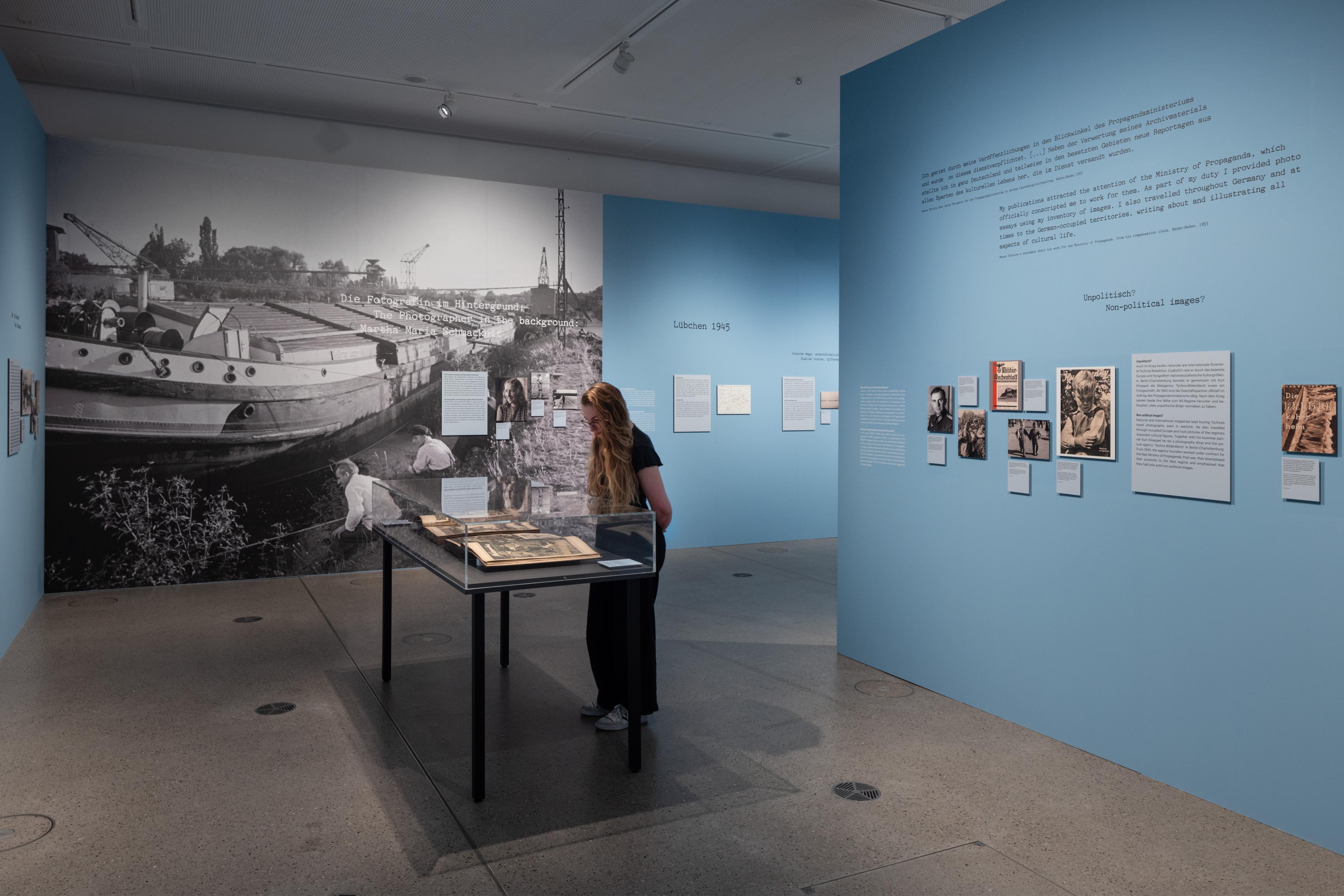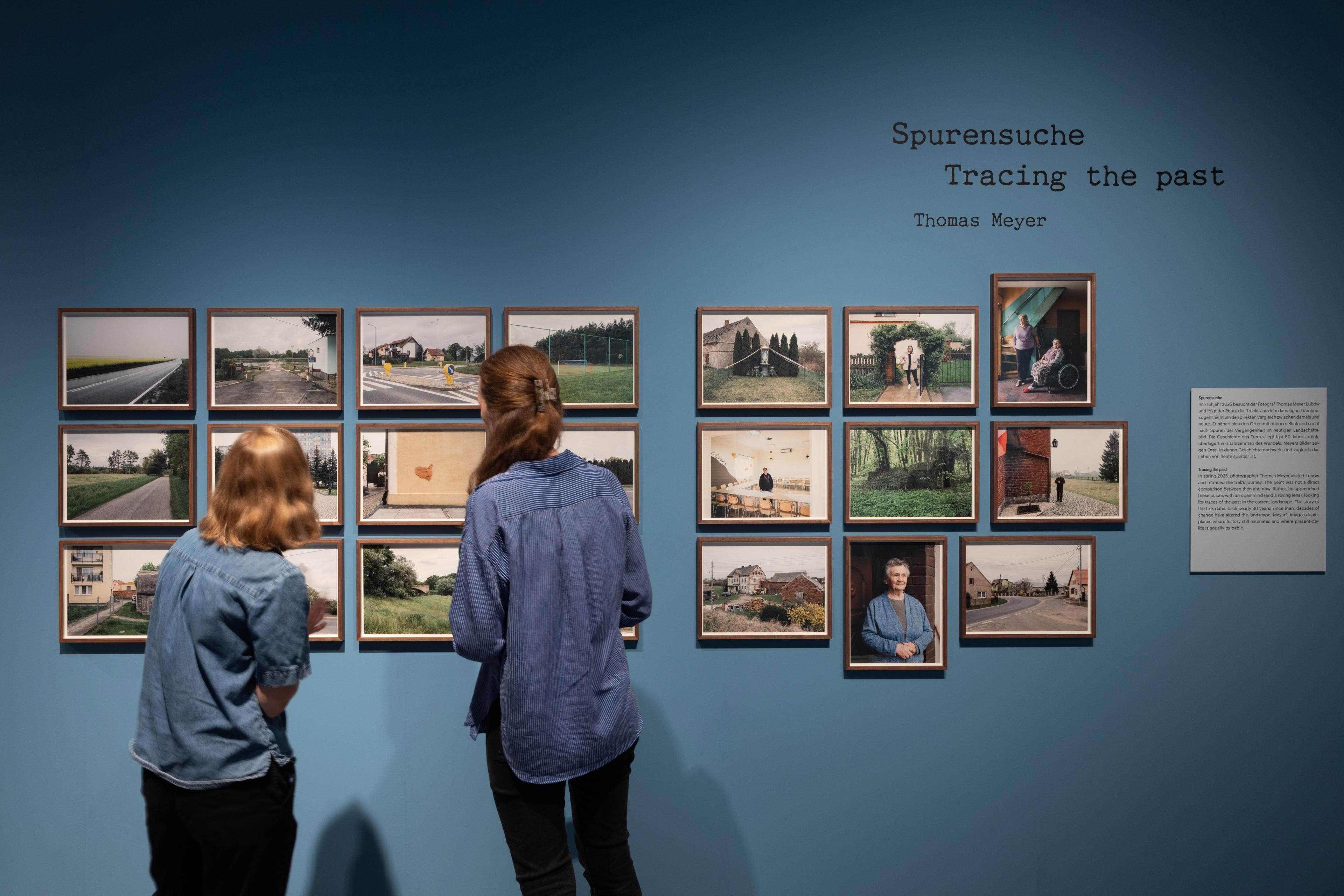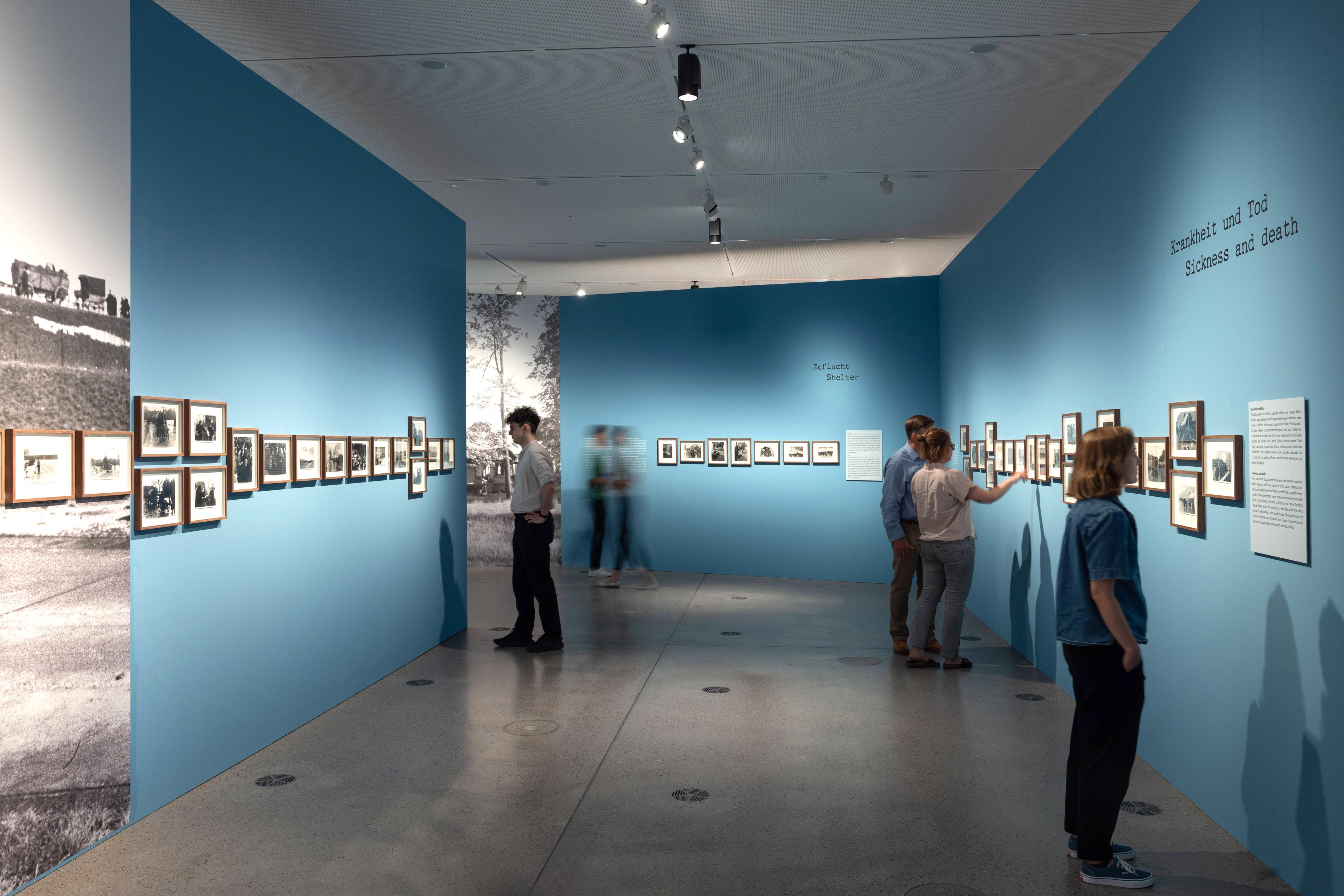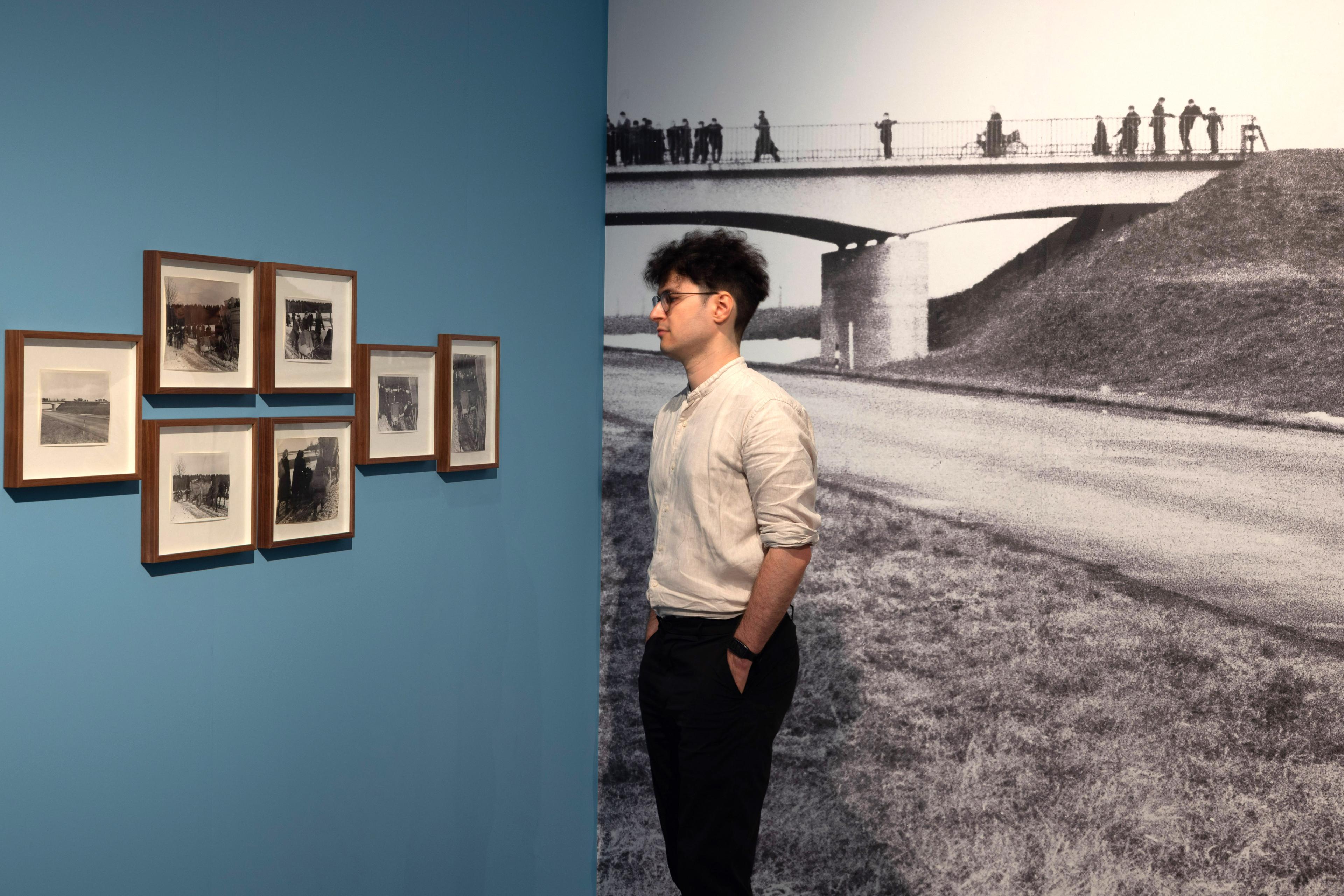The Trek – Photographs of displacement 1945
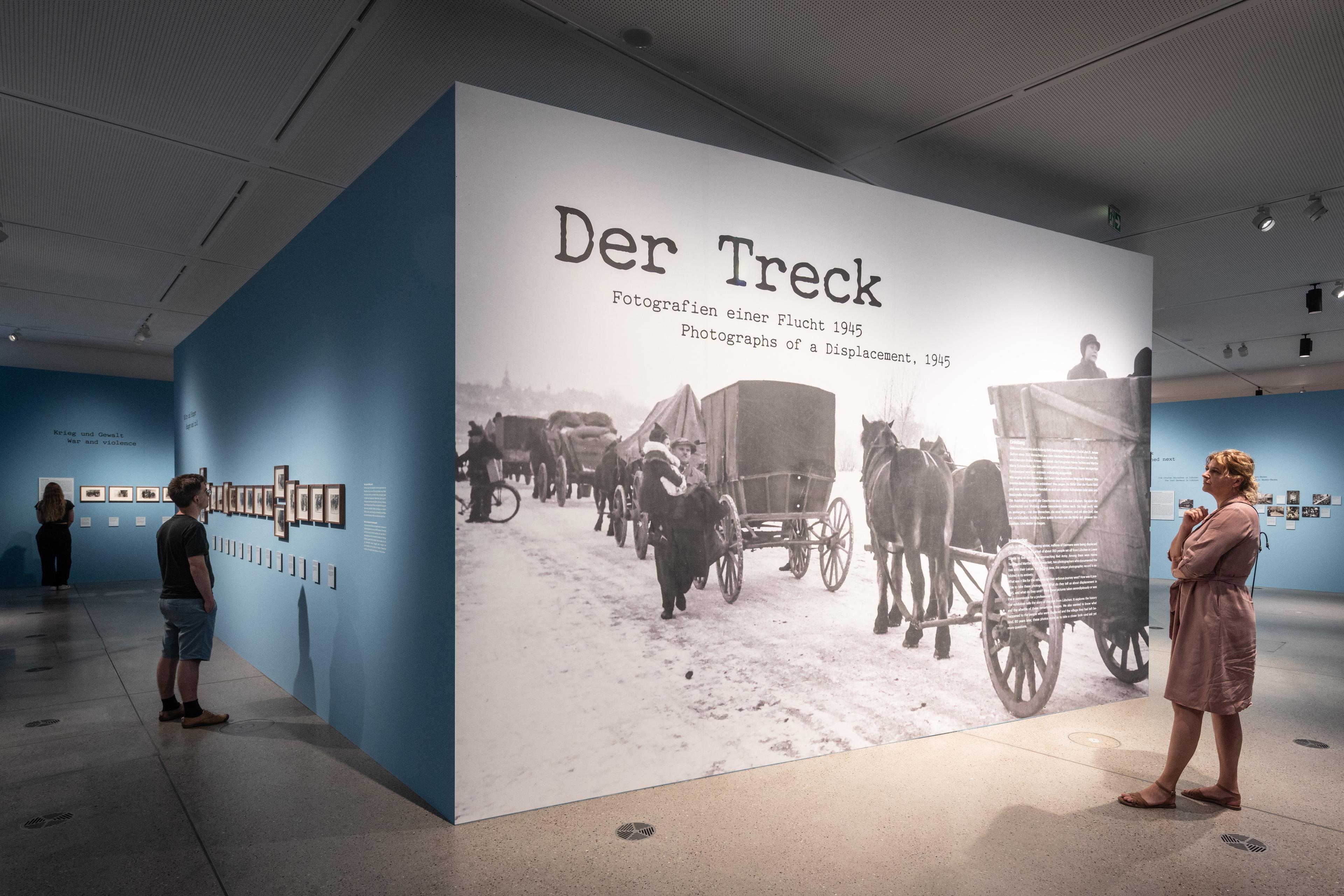
Special Exhibition: The Trek – Photographs of displacement 1945
In early 1945, in the freezing winter, millions of Germans were being displaced. On 21 January, a refugee trek left Lübchen in Lower Silesia to escape the approaching Red Army: about 350 people, mainly women, children and old people.
On this trek were two professional photographers, Hanns Tschira and Martha Maria Schmackeit, who documented this month-long journey in about 140 pictures. The Documentation Centre exhibits this unique set of photographs for the first time in its entirety.
How was it even possible to produce these photographs? What do these pictures tell us about displacement in 1945 and what do they omit? The curatorial team's research has in fact established that these photos were not taken for purely personal use.
The exhibition has three parts. At its core is the story of the trek from Lübchen and the refugees' arduous journey west. At the same time, the exhibition demonstrates how such images have continued to shape our notions of displacement and expulsion.
Finally the exhibition explores what happened after this displacement - to the Germans and to the village they left behind. Thomas Meyer has recently retraced the trek's route and taken new photographs, including those of the village which for three generations has been called Lubów.
Project management: Barbara Kurowska MA, Dr Nils Köhler
Design: Marc Naroska
Duration: 20 June 2025 to 18 January 2026
Supporting program
Venue for all events: Documentation Center for Displacement, Expulsion, Reconciliation, Stresemannstraße 90, 10963 Berlin
1. Public events
Opening
The Trek – Photographs of a displacement, 1945
Date: June 19, 6:00 PM
Duration: 120 minutes
Language: German
Price: Free with registration at veranstaltungen@f-v-v.de
Telephone tour (Bei Anruf Kultur)
The Trek – Photographs of a displacement, 1945
Date: July 2, 4:00 PM, October 15, 4:00 PM
Duration: 60 minutes
Language: German
Price: Free with registration (www.beianrufkultur.de or by phone at (040) 209 404 36)
The “Bei Anruf Kultur” (Culture on Call) program creates an opportunity for people who would otherwise have no chance to experience this exhibition.
Guided tour
The Trek – The Trek – Photographs of a displacement, 1945
Date: July 6, July 20, August 3, September 7, October 5, November 2, November 16, December 7; 11:30 AM
Duration: 90 minutes
Language: German
Price: Free, no registration required
Storytelling café
The Trek – Photographs of a displacement, 1945
Date: July 6, 2:00 PM
Duration: 180 minutes
Language: German, English
Price: Free, no registration required
Writing workshop
Date: September 6, 2:00 PM
Duration: 180 minutes
Language: German, Polish, English
Price: Free, no registration required
2. Bookable offers for school and adult groups
Guided tour
The Trek – What do photographs of displacement and expulsion show?
Date: freely bookable
Duration: 90 minutes
Language: German, English
Price: Free as part of school lessons and youth education
Target group: 10th to 13th grade, students, groups of up to 20 people (larger groups will be divided)
Guided tour
The Trek – Photographs of Displacement and Expulsion in a Historical Context
Date: freely bookable
Duration: 75 minutes
Language: German, English
Price: flat rate of 70 Euro (reduced rate of 35 Euro for registered associations)
Target group: For groups of up to 20 people
Workshop
Looking at displacement – analyzing photographs, understanding backgrounds
Date: freely bookable
Duration: 120 minutes
Language: German, English
Price: Free of charge as part of school lessons and youth education / otherwise 70 Euro (reduced price of 35 Euro for registered associations)
Target group: From grade 10 / adults, for groups of up to 20 people, larger groups will be divided
